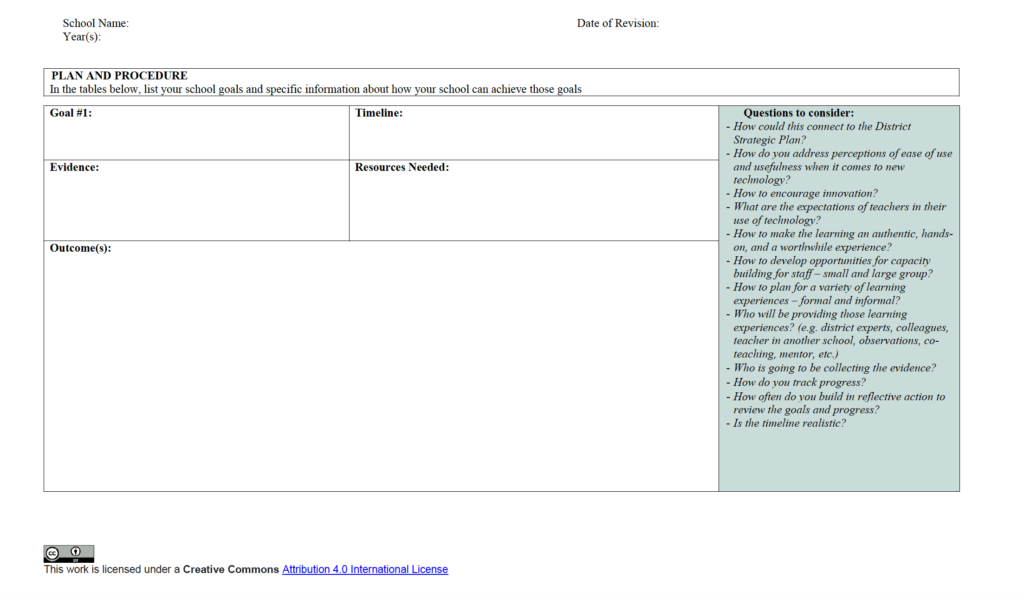Introduction
My overall perspective during the last two years while completing this master’s degree has mostly been, honestly, to survive. Let me tell you – being a new administrator, teaching almost full time, and working to complete a master’s degree all while during a global pandemic has been a challenge.

As a new administrator, trying to balance the competing roles and responsibilities, I realized that what I needed was to do was find information that would help be build and develop more leadership skills. That is where my research started. As I read and learned more, I was able to apply it to my practice, get feedback, and try new things. I spent the first year as an administrator as more of an observer – noticing how things were done, learning the processes and protocols, and building connections. As I transitioned into my second year, I started to think about ways in which I could support my staff and students in more effective ways in regard to technology education.
Our little community school has gone through much administrative turnover in the past five years. The teachers, students, and families are an amazing group of people that really care. There are amazing things going on in all classrooms in regard to technology, however, I have noticed that there is little discussion and sharing of resources and information. I really wanted to find a way to support staff in building a more cohesive plan for technology understanding and use in our building. I started by exploring Change Theory (Fullan, 2007) and components that are important to have when facilitating change. I then looked at Technology Adoption Theories (Roger, 1962; Fishbein, 1967; Hall, 1979; Davis, 1989; Ajzen, 1991; Venkatesh et al., 2003) and identified components that made the most impact to individuals when implementing new technology. The information that I found was insightful and important to share with others. I took the information that I found about change and technology adoption and applied it to the creation of a document.

What I created was a template for effecting educational technology change within a school system. It is a Technology Plan Template that school teams can use to discuss and plan for educational change within their teams. It includes important components from technology plan exemplars as well as ‘Questions to Consider’ which link to outcomes in the literature.
How to Use
This document is meant for schools to reference and use as they navigate and plan for technology use and implementation. With the Creative Commons License, Attribution 4.0 International, you are free to:
Share – copy and redistribute the material in any medium or format
Adapt – remix, transform, and build upon the material for any purpose, even commercially
I hope for this to be a living document. As I work through this with my own staff, I will update and change it to reflect what worked for us. In addition, I hope to engage schools across the country to use this document as a place to start with planning for technology change.
If you want to share out your experience with the document or ask questions, please reach out on social media (@MsEmilyMiller on Instagram and Twitter) or use the #techplanteam hashtag on Twitter.

Links
Click below for a link to a PDF version of the Technology Plan Template
School-Technology-Plan-TemplateClick below for an editable Word Document of the Technology Plan Template
References
Ajzen, I. (1991). The theory of planned behavior. Organizational Behavior and Human Decision Processes, 50, 179–211.
Davis, F. D. (1989). Perceived Usefulness, Perceived Ease of Use, and User Acceptance of Information Technology. MIS Quarterly, 13(3), 319–340. https://doi.org/10.2307/249008
Fishbein, M. (1967). Attitudes and the prediction of behaviour. In M. Fishbein (Ed.), Readings in attitude theory and measurement. Wiley.
Fullan, M. (2007). Change Theory as a Force for School Improvement. In J. M. Burger, C. F. Webber, & P. Klinck (Eds.), Intelligent Leadership: Constructs for Thinking Education Leaders, 27–39. Springer Netherlands. https://doi.org/10.1007/978-1-4020-6022-9_3
Hall, G.E. (1979). The concerns-based approach to facilitating change. Educational Horizons, 57, 202-208
Rogers, E. M. (1962). Diffusion of innovations. Free Press of Glencoe.
Venkatesh, V., Morris, M. G., Davis, G. B., & Davis, F. D. (2003). User Acceptance of Information Technology: Toward a Unified View. MIS Quarterly, 27(3), 425–478. https://doi.org/10.2307/30036540

Recent Comments